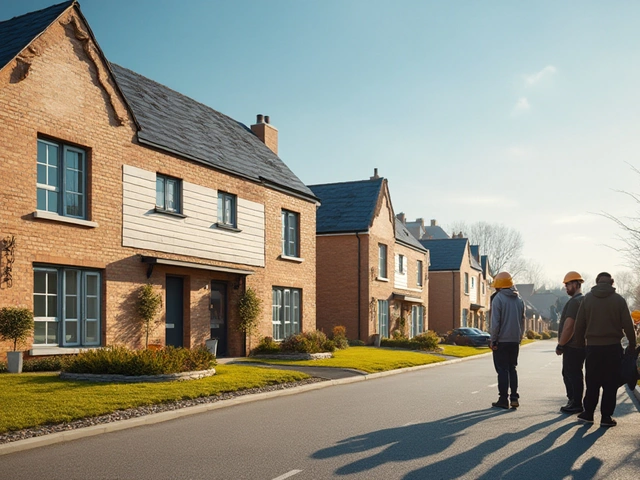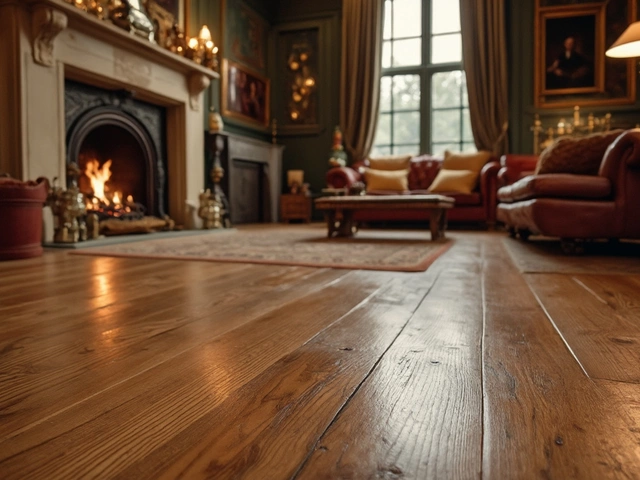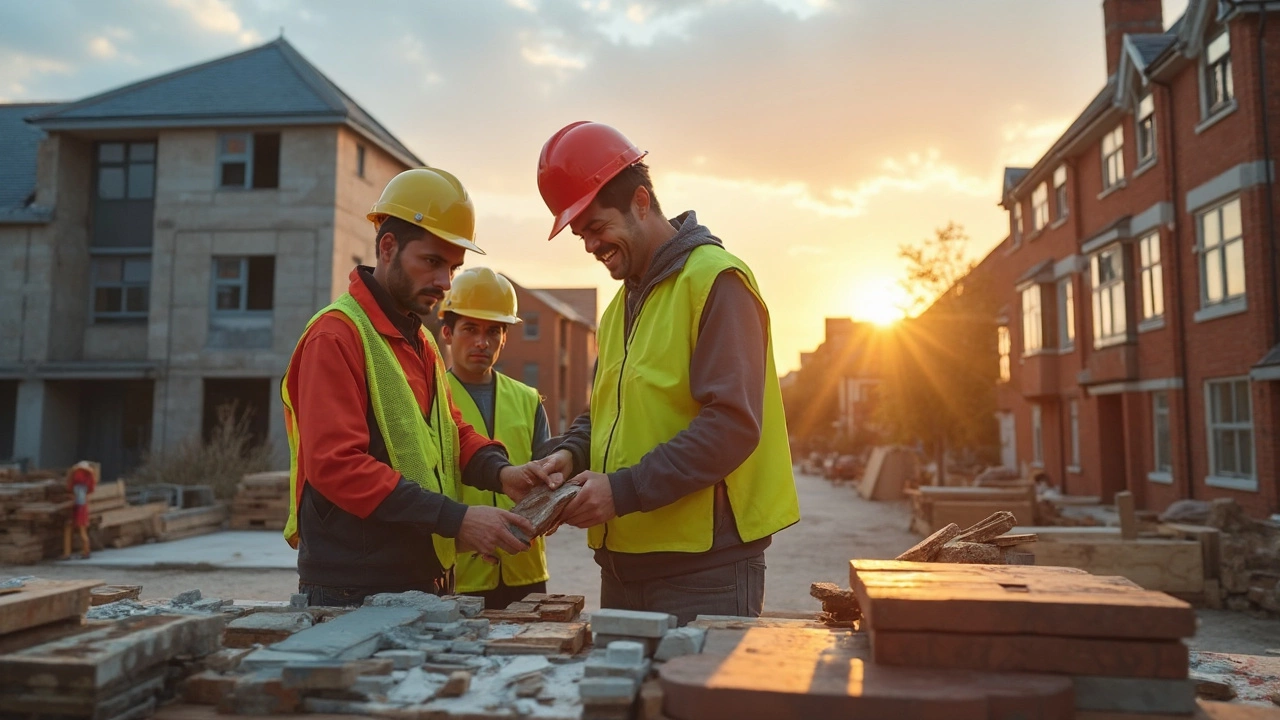
Ever notice how every building you walk into just feels solid? That’s no accident. The materials holding up those walls, floors, and roofs have been picked for their reliability and job-specific perks. These aren’t just random choices—builders lean on a handful of mainstays because they work every time, from skyscrapers in the city to that backyard shed you keep meaning to finish.
Most people think building is all about design, but if you don’t nail the material choice, your project could crumble (literally). Want a fast-paced project or something to last through a century of storms? Each material brings its own strengths and quirks. Whether you’re fixing up your house, starting a business, or just curious about what’s around you, knowing what goes into construction helps you understand not just how things get built, but why they stay standing.
- Concrete: The Backbone of Construction
- Steel: Tough and Flexible
- Wood: Classic and Versatile
- Bricks, Blocks, and Stones
- Glass, Plastics, and Other Essentials
Concrete: The Backbone of Construction
Walk by any building site and you’ll spot concrete somewhere—sidewalks, walls, driveways, maybe even countertops. Concrete is the real workhorse in construction, mostly because it’s incredibly strong, surprisingly cheap, and super versatile. You mix cement, sand, gravel, and water, and you end up with a rock-solid material that can take a serious beating.
Want a fact that’ll blow your mind? About 10 billion tons of concrete are produced every year around the world. So if you stacked up all the concrete used annually, you’d get a wall that could circle the Earth hundreds of times. No wonder it’s called the backbone of building.
Here’s another cool thing: concrete only gets stronger over time. Other materials wear down, but concrete—even after decades—isn’t going soft. That’s why you see Roman structures over 2,000 years old still standing. It’s all about the chemical reaction called hydration, which keeps making the concrete tougher long after it dries.
| Type of Use | Strength (MPa) |
|---|---|
| Sidewalks / Driveways | 20-25 |
| Residential Slabs | 25-30 |
| Commercial Foundations | 30-40 |
| High-Rise Buildings | 40+ |
But it’s not all sunshine—concrete has to be mixed just right. Too much water and it’ll crack, too little and it won’t set well. And don’t forget rebar (steel rods) for extra strength, especially in things like bridges or skyscraper foundations.
If you’re tackling a home project, remember these tips: Always use clean water, stick to the mix recommendation (usually on the cement bag), and finish your pour in one go if you can. Frozen weather? Wait it out. Cold temps can ruin the mix and cause big headaches later.
No matter what sort of project you’re thinking about, if it calls for muscle, construction materials like concrete are almost always part of the answer. It really is the backbone—strong, reliable, and tough to beat for sheer usefulness.
Steel: Tough and Flexible
Ask almost any builder what keeps bridges from falling and buildings from swaying, and they’ll point straight at steel. This stuff doesn’t just show up in skyscrapers and stadiums; you’ll spot it everywhere—from the inside of your car to those kitchen appliances you use every day.
The main reason steel is so popular? It’s both ridiculously strong and surprisingly flexible. That means it can hold up a ton of weight and handle a fair bit of movement without snapping. If you’re thinking about earthquakes, you’re on the right track—steel keeps modern buildings safe during a shake-up.
There are all sorts of steel, but the two big hitters in construction are:
- Rebar (reinforcing bar): Used inside concrete to help it resist cracks.
- Structural steel: Big beams and columns that form a building’s frame.
Here’s a quick table to show what makes steel such a standout:
| Property | Why It Matters |
|---|---|
| Tensile Strength | Won’t snap under heavy loads |
| Flexibility | Bends without breaking—great for earthquakes |
| Recyclability | Easy to reuse; steel is recycled more than paper or glass |
| Corrosion Resistance | Special coatings stop it from rusting |
Here’s a pro tip: Always check if the steel is “galvanized” if you’re working where rain or moisture is involved. Galvanized steel has a protective zinc layer, which keeps rust off and adds years to its life. Steel isn’t just strong; with the right care, it lasts decades without losing its edge.
Steel does come with a higher price tag up front, but it often pays off because it’s so low-maintenance and holds up under pressure. That’s why huge projects, like sports arenas and high-rises, almost always use steel for the frame. Builders trust it because it keeps people safe and buildings standing tall. If you’re starting your own project, thinking about how steel can be used might just save you from costly headaches down the road.
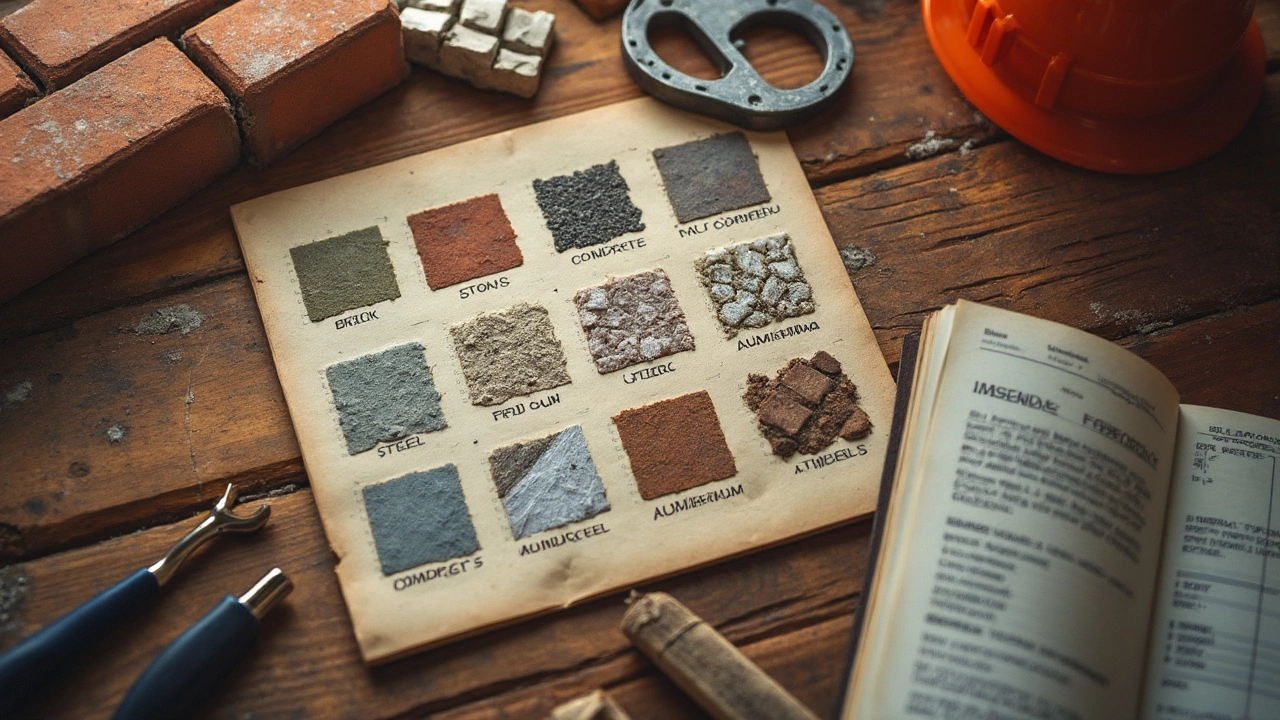
Wood: Classic and Versatile
Wood just gets the job done—always has, probably always will. It’s the original building material, and chances are, it’s still holding up the house where you grew up. Wood is popular because it’s easy to work with, lightweight, and strong for its weight. Builders love it for framing homes, making floors, and even putting finishing touches like trim and cabinets.
There’s more to wood than just two-by-fours. Here's how it breaks down:
- Softwoods like pine and spruce are go-tos for framing, decking, and general construction because they’re easy to cut and cheaper.
- Hardwoods such as oak and maple show up where you need durability and looks, like for floors or cabinetry. They're tougher to work with but last longer.
- Engineered woods—think plywood and MDF—get used when you need extra stability, like in floors, walls, or anything that needs to avoid warping or splitting.
One solid tip if you’re building outside: Not all wood handles weather the same. Pressure-treated wood is made to take on rain, bugs, and rough treatment, so use it for decks, fences, and anything in the yard. Regular wood needs sealing and care to avoid rot.
Wood is also pretty eco-friendly if sourced right. Look for lumber that’s labeled as coming from sustainable forests. Plus, wood is much easier to reuse or recycle compared to concrete or metal.
Quick fact: In the U.S., about 90% of homes are still built with wood frames. That says a lot about the power of this classic construction material.
Bricks, Blocks, and Stones
If you drive through any old neighborhood, you’ll spot walls made of brick, stone walkways, and houses with block foundations. These materials have staying power. They’re used everywhere because they’re tough, don’t rot, and can take a beating from weather.
Bricks are made mostly from clay and fired in a kiln. That’s what gives them that reddish color and makes them sturdy. They’re fireproof and insulate pretty well, which explains why you see them in homes, schools, and some old factories. Builders usually choose brick when they want a strong look and lasting results. The oldest known bricks date back to 7000 BC, so they’ve earned their spot in modern construction.
Blocks, especially concrete blocks, are bigger than bricks and pretty cheap for the amount of wall you get. These concrete blocks are squared off, hollow in the middle, and easy to stack. The hollow part isn’t just empty space—you can fill it with extra concrete or insulation. If you’re dealing with a big job, like a basement or a commercial building, blocks save time and cash. Plus, the surface takes paint or siding with zero fuss.
Stones have been the go-to for castles and monuments for centuries. Today, natural stone like granite, limestone, or marble is usually about looks and long-term durability. You see it in fancy facades, patios, retaining walls, or expensive buildings. Stones don’t wear out fast. They’re heavy, so they need a strong support underneath, and they take longer to build with, but nobody can argue with the look.
- If you want something that’ll last for generations, brick or stone are your best bet. They resist pests and don’t burn.
- Looking to save a little cash on your structure without sacrificing strength? Concrete blocks are a smart move.
- Remember that it’s not just about the main material. The mortar—the glue holding the blocks or bricks together—matters more than most people realize. Use the right mix so water and cold don’t sneak in.
People often pick these because of long-term value. Spend a bit more upfront, and you’ll spend less fixing cracks or rotting wood down the line. If there’s one thing I’ve learned after years of fixing up houses, it’s that you almost never regret going for the solid choice. That’s why construction materials like brick, block, and stone have stuck around for so long.
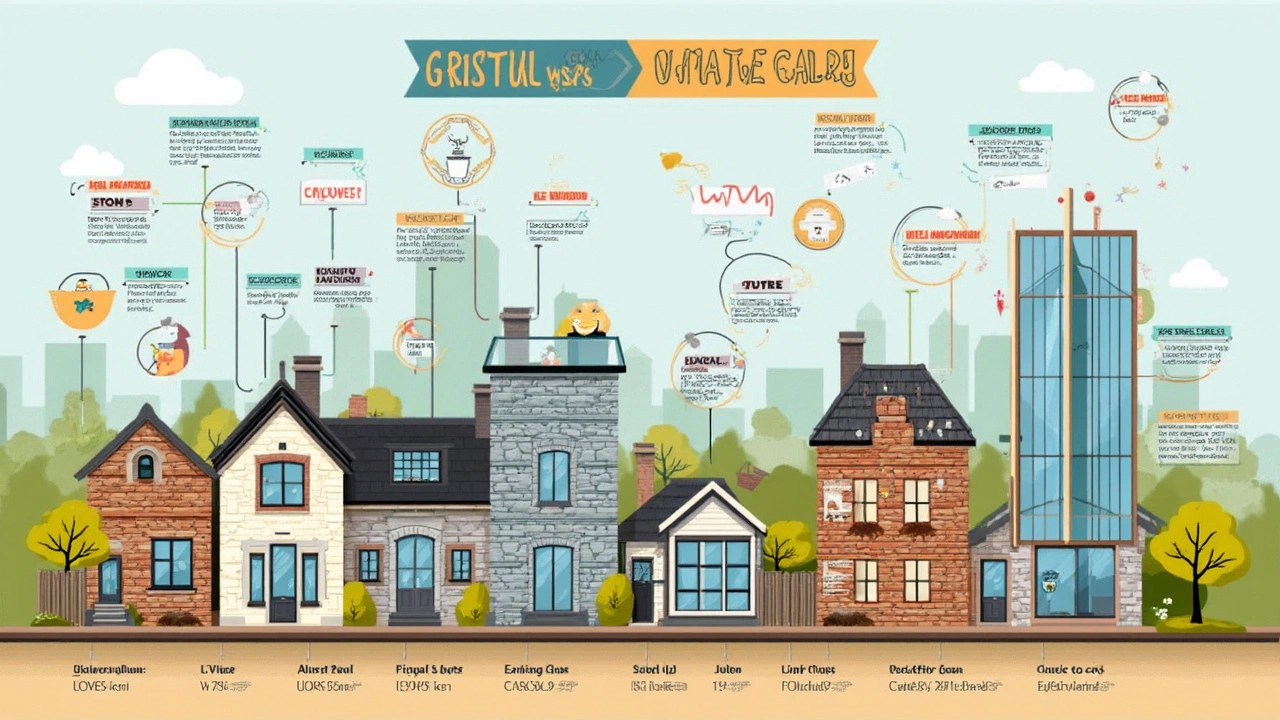
Glass, Plastics, and Other Essentials
Once you’ve got your main stuff like concrete, steel, and wood, it’s time to think about the parts that make a building comfortable and useful. Glass isn’t just for windows anymore—architects use it for whole walls, skylights, and even floors in fancy offices. Modern glass comes toughened for safety, or treated to save energy by blocking heat and UV rays. That’s a big deal if you want lower cooling bills or a glare-free workspace.
Plastics have changed the construction materials world in a big way. PVC pipes carry water and waste in almost every house built lately. Builders like plastics because they’re lightweight, cheap, and won’t rust. You’ll spot plastics in insulation, roof coverings, wall panels, and all kinds of waterproofing sheets. Another win: most plastics can be shaped for weird spaces where other materials won’t fit.
Don’t skip the essentials like insulation, adhesives, and sealants. Insulation isn’t just about staying warm. It can cut energy costs, keep noise down, and stop water damage, which keeps buildings standing longer. Foam boards, fiberglass batts, and spray foam all have their place depending on your budget and climate.
- Glass: Used for windows, facades, partitions, skylights, and even integrated solar panels. Safety is a big deal: tempered or laminated glass won’t shatter into dangerous shards.
- Plastics: PVC, polycarbonate, and acrylics show up in pipes, wall panels, and domes. Polycarbonate panels are tough enough to take a hit but still let light through.
- Insulation: Fiberglass and foam are the usual picks. Quality insulation pays off fast by saving energy year-round.
- Sealants and adhesives: These stop leaks, drafts, and rattles. If you skip these, even the best-done job won’t last.
A fun fact if you’ve got kids like me—some schools are adding “smart glass” windows that adjust tint with a switch. It keeps classrooms cool while letting in sunlight. If you’re renovating, it’s worth asking your contractor about modern glass and plastic options. The right combo can lower your bills, boost comfort, and make any space look sharp.
